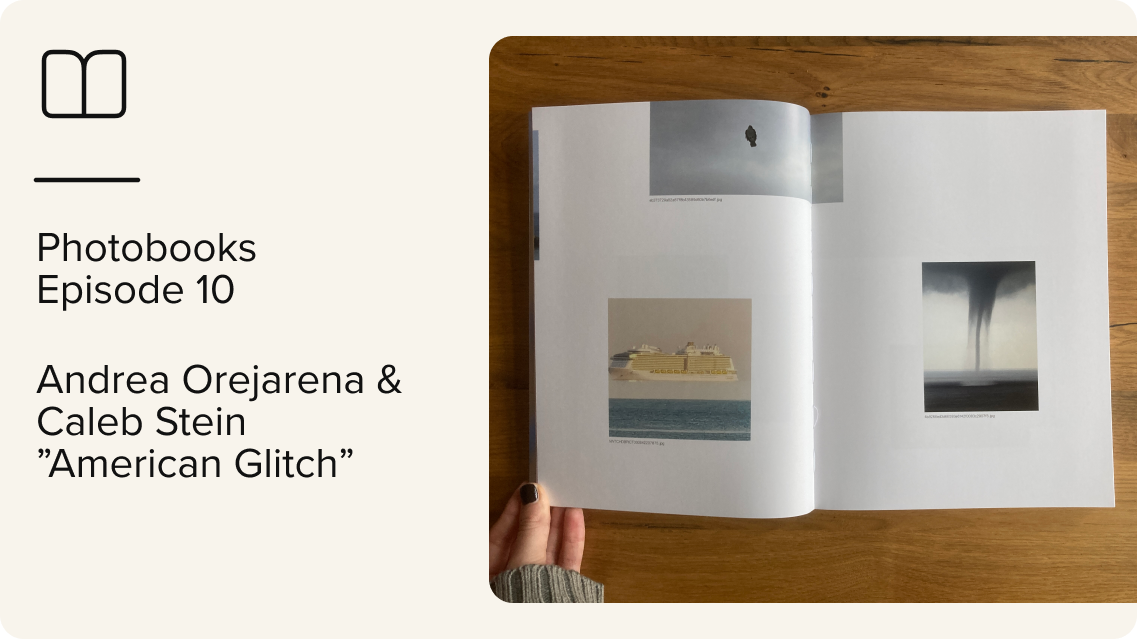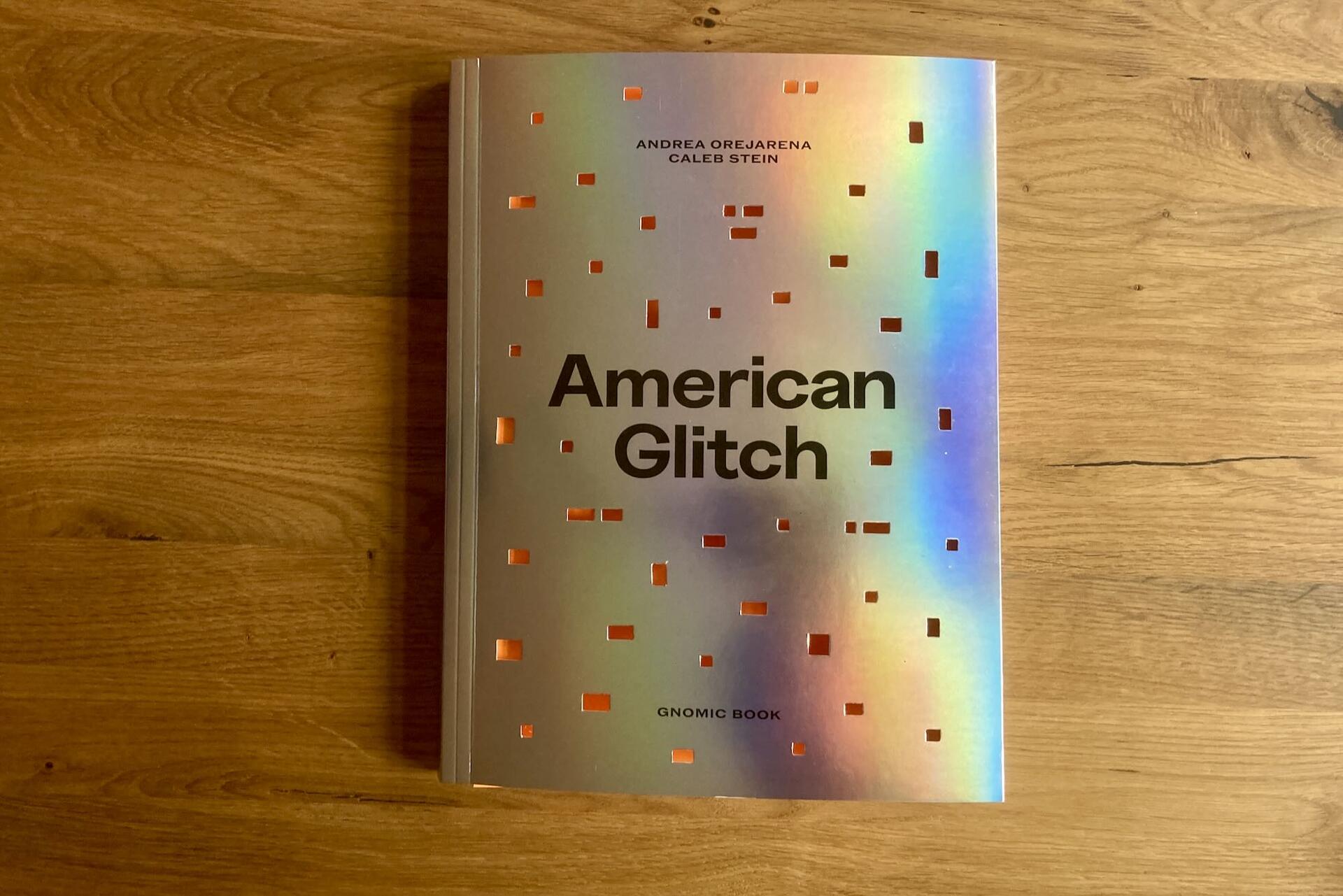
Photobook Reviews, Episode 10 – by Kate Schultze
I first came across Orejarena’s and Stein’s work at Foam Amsterdam earlier last year. Walking past their wall my initial reaction was to laugh at familiar glitched images I come across on Instagram daily. However, I lingered and I ended up spending the longest amount of time in front of their images trying to find every glitch portrayed in these pictures, almost as if to prove to myself I could distinguish reality from fiction. That I could trust myself enough to not be fooled by misinformation. Turns out I couldn’t and most definitely still can’t. I was delighted to find American Glitch on the Gnomic Books table at Polycopies to further feed the obsession of trying to look behind the curtain only to figure out for it not to be successful at all, I think, I’m not sure to be completely honest. The result was: the obsession stayed. And I hope that after reading this you will feel similarly to me.
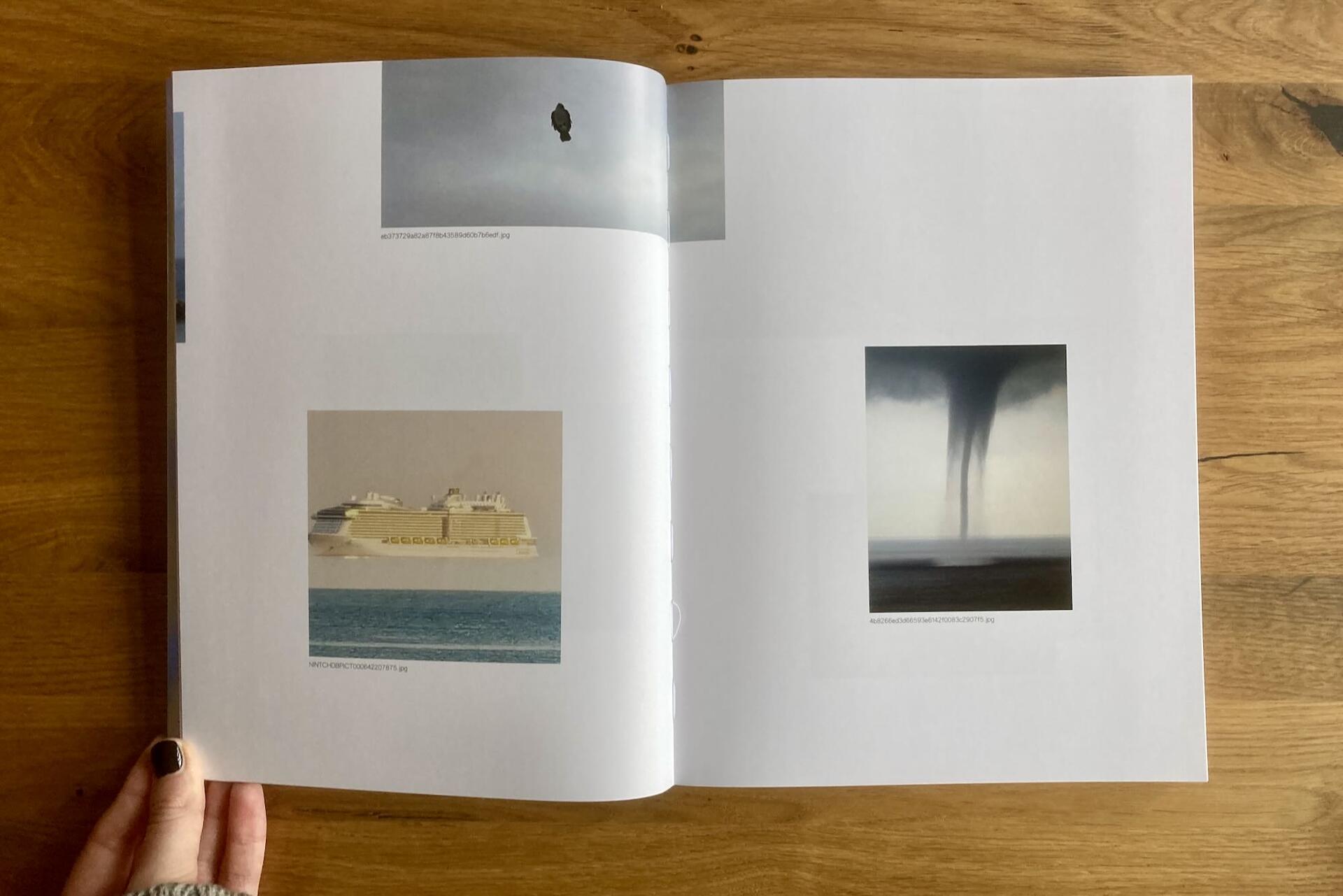
The photo book “American Glitch” uses 3 different visual sources to investigate what “glitch” means. The artists collected images on social media showing different glitched moments, like misrendered Google Street View screenshots or a banana seemingly being stuck in concrete pavement. Inspired by those images Andrea and Caleb photographed supposedly glitched situations in the US. The biggest impression on me were the photos of a fake village in California, resembling the Afghan town known as Ertebat Shar. This village is used for military training. The third visual contribution are FBI files from the 1950’s investigation of the so called Extrasensory Perception and the research done by Mr. Foos. These files are interrupted by found images, which makes certain parts difficult to read, yet you find yourself trying to gain as much information from these pages as possible. This is also supported by the layout choices. Some images are cut off, some are overlapping two pages. You go back and forth, reading the book from more than one direction.
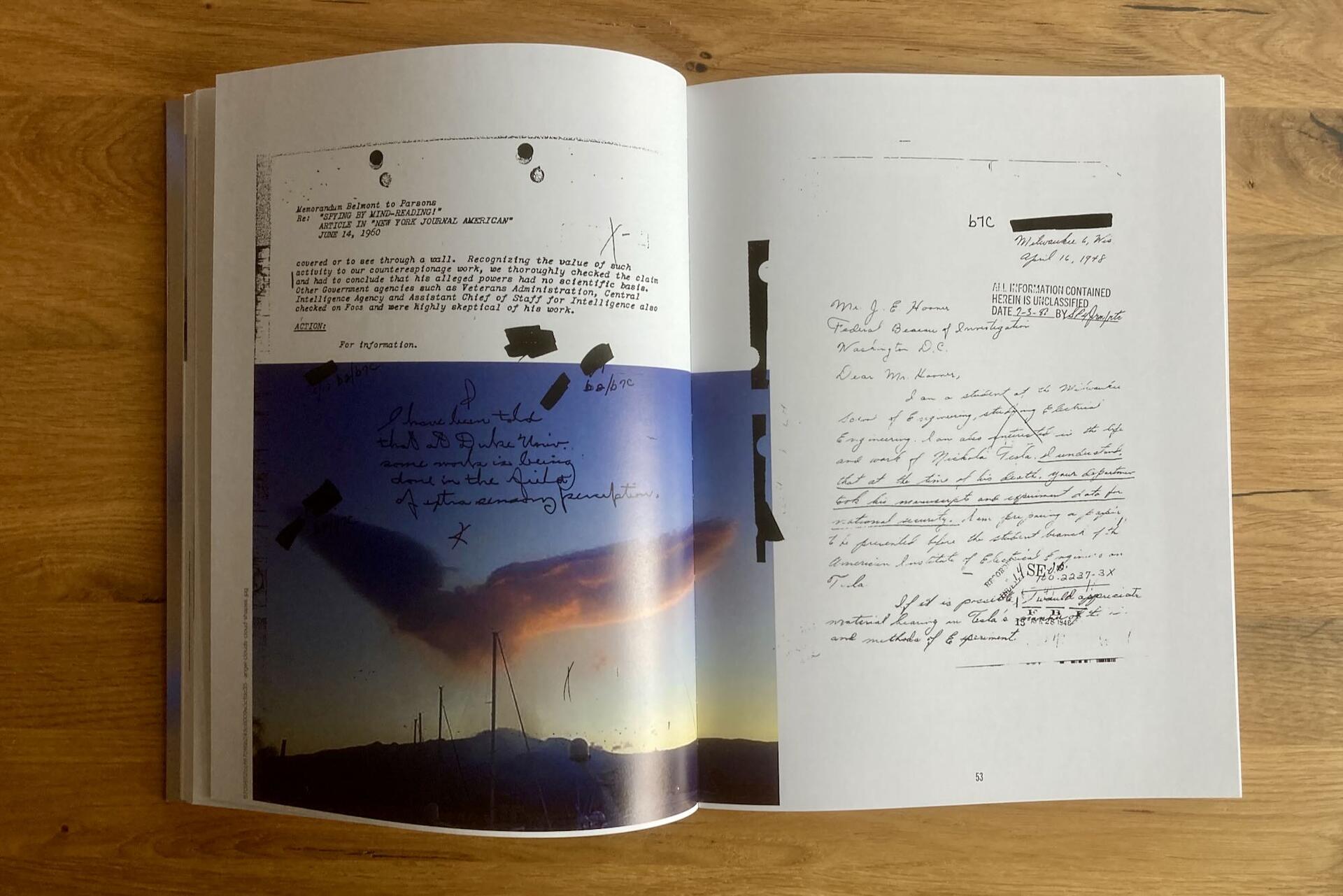

The visuals are supported by 3 different sets of texts. Firstly the names of the files, printed on the edges of the page. I read it as an indicator as to what images where found material and which images were taken by the artists. But who knows if I’m right. American Glitch also contains an essay by the photo theorist David Campany titled “The Glitch In Us” as well as a separate booklet with essays by 36 contributors exploring the idea of “glitch”.
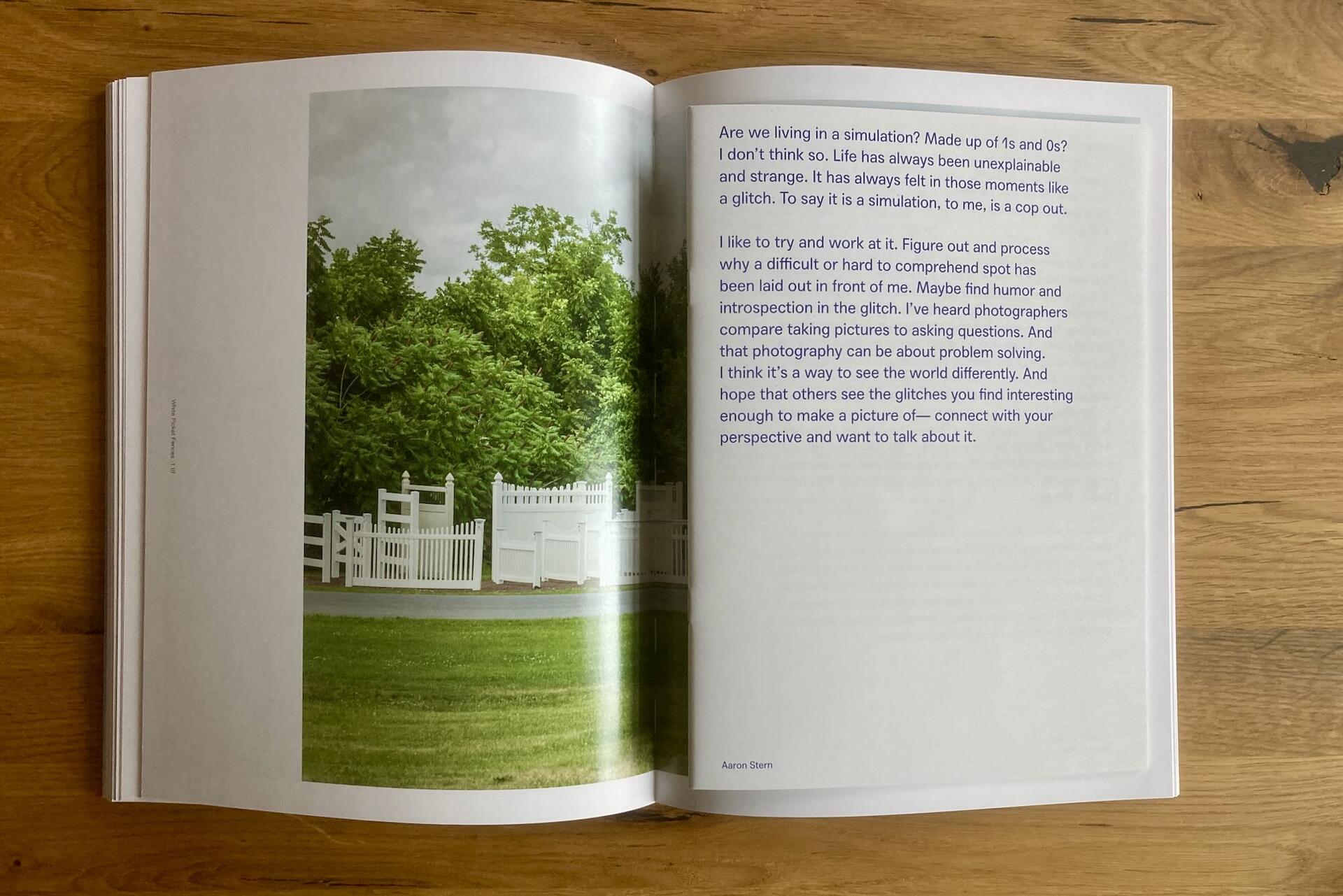
As Campany says “American Glitch […] brims with its own inventive play and suggestive commentary on its motifs and methods, that it is probably best not too write about it directly.”.
So just as Campany recommended, I won’t write about it directly. But I will strongly urge you to take time to look at this book and get absorbed into a project that cordially invites you to be part of its satirical and sceptical approach and makes you question the everlasting problem of photography, how to distinguish between fact and fiction, or if this is even at all possible nowadays.
